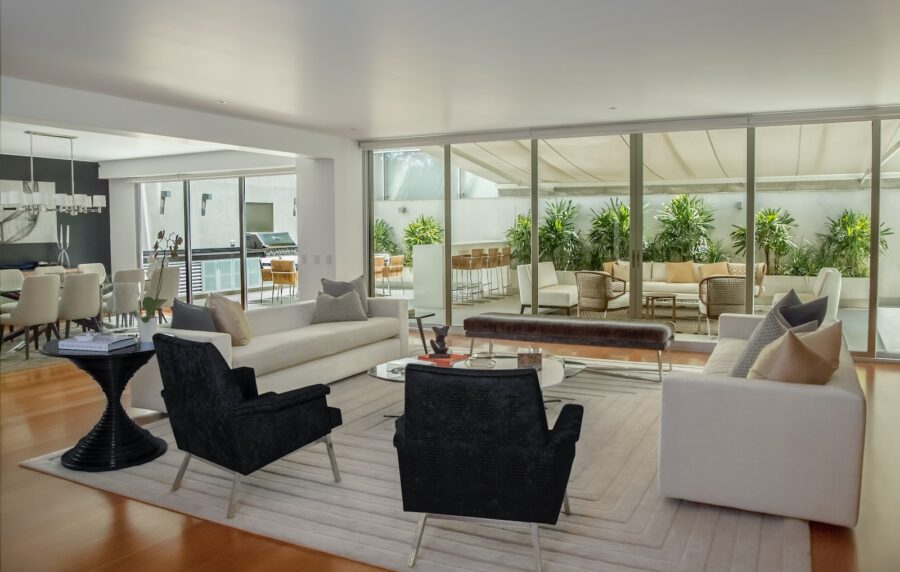With environmental concerns taking centre stage, businesses are increasingly recognising the importance of aligning their practices with green values to cater to an environmentally conscious customer base. However, the spotlight is now turning towards another aspect of the business – your very offices. Does your workplace showcase the same commitment to the environment that your company demonstrates to its customers?
Having an office that impresses customers is important, but even more vital is having an office where your employees can be proud to work. By making eco-conscious choices in your office furniture and design, you can ensure your workplace mirrors your customer-facing brand, boosting job satisfaction and productivity. So, going green is not just good for the planet, it makes good business sense.
Hybrid working: A green approach to business
The concept of hybrid working isn’t just transforming the way we work, it’s also a powerful tool for reducing an organisation’s carbon footprint. Including hot-desking and flexible work arrangements can substantially reduce the required number of desk spaces, optimising overall office space and energy consumption. Downsizing to a smaller office space, if feasible, not only cuts costs but also significantly decreases energy usage, aligning with environmental goals.
Commuting remains a major contributor to a company’s carbon footprint. Employers can wield influence over this aspect by promoting alternatives such as remote working and encouraging employees to walk or cycle with schemes designed to support this. Leveraging government-backed initiatives such as the Cycle to Work scheme not only lessens the ecological impact but enhances employee satisfaction and wellbeing. It’s a simple initiative to put into place: all the company needs to provide are suitable cycle racks on site to enable employees to store their bikes securely during their working period.
The three Rs in the workplace : Reduce, Recycle, Reuse
Incorporating recycling efforts into workplace practices is as vital as it is at home. Implementing straightforward strategies can enable both employees and businesses to contribute to a healthier planet while maintaining productivity. Once a recycling at work scheme is established it should become second nature to everyone in the office.
Five steps towards a greener office
- Strategic bin placement; make recycling effortless by situating recycling bins alongside regular waste bins in communal areas.
- Educating employees; clear labelling and information on what items can be recycled will help staff confidently participate in recycling initiatives.
- Digital over paper; prioritise electronic documents over printed copies. When printing is necessary, use both sides of the paper.
- Eco-friendly supplies; select sustainable office supplies such as recycled paper, notebooks and pens. Encourage supply returns for reuse and consider recycled ink and toner cartridges.
- Reusable consumables; remove single-use plastic by providing reusable dishware and cutlery, saving costs and reducing non-recyclable waste.
Clean energy: Switch to a sustainable power source
Investing in solar panels for business premises is not the same expensive investment as on a home. Despite the initial cost, it proves financially rewarding in the medium to long run. Daytime-active offices are ideal for harnessing solar energy, potentially even generating excess energy to sell back to utility companies. Simple steps like switching to LED lighting and taking advantage of natural light can further decrease energy consumption, benefitting both the environment and employee wellbeing.
Furniture and design: Building a greener workspace
Choose eco-labelled furniture that demonstrates your commitment to the environment. Furniture that carries an eco-label meets strict requirements over its entire production chain, packaging and end-of-life recycling to ensure the products are environmentally conscious. Some furniture companies now also offer take-back schemes, the option to purchase upcycled furniture and recycled materials. The other thing to look out for is a long warranty as such products are designed with longevity in mind, eliminating the need to frequently replace office furniture.
Biophilic design
The emerging trend of biophilic design brings nature into the workplace, proven to reduce stress and enhance wellbeing. Integrating greenery through potted plants is one of the easiest ways to introduce nature into the workplace. The bonus is a positive environmental impact as living plants will help to improve air quality in office interiors. Green walls are an increasingly popular feature in larger office spaces looking to be on the cutting-edge of biophilic design, however, the more common way to achieve this is by adding pot plants and hanging plants throughout the office space.
A green office isn’t just about enhancing aesthetics or fulfilling customer expectations, it’s about aligning your workspace with your company’s values and environmental commitments. Embracing hybrid working, recycling practices, clean energy solutions, sustainable furniture choices and biophilic design not only contribute to a healthier planet but also facilitate a motivated and engaged workforce. By adopting environmentally conscious practices, you are not just making a statement, you are creating a workspace that embodies the change you wish to see in the world.

Helen Beebe
Helen Beebe is Managing Director of AJ Products, a full-service supplier of workplace furniture and equipment for offices, warehouses, industrial facilities, canteens, changing rooms and more. Throughout the range, AJ Products place ergonomics front and centre to help businesses improve employee wellbeing and productivity.


